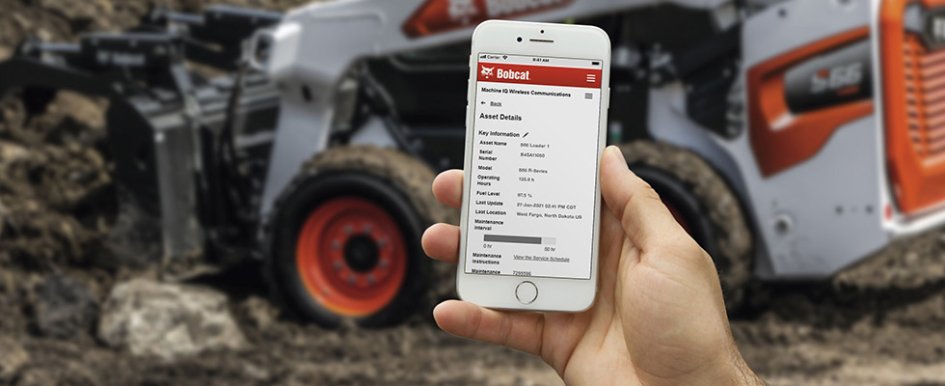
Today’s compact equipment is intelligent, capable of providing owners, fleet managers and machine operators with vital information that can help them manage their businesses more efficiently, increase jobsite productivity and avoid unnecessary downtime. It’s all possible with machine telematics — wireless information systems that link human and machine like never before. As a business owner, you can use machine telematics to:
- See where all your assets are in real time
- Remotely track equipment across multiple jobsites and projects
- Track how many hours your machines are in operation and monitor each machine’s fuel efficiency
- Receive fault code notifications and maintenance reminders
- Use technology and data as a proof point when attracting new employees, particularly millennials who will represent 75% of the global workforce by 2025
Understand All the Benefits of Your Telematics System
Machine telematics have several benefits for business owners, including improved fleet productivity and efficiency, proactive machine maintenance and protection, and preventing failures and unscheduled downtime. Knowing how
to use this information not only keeps you in the driver’s seat of your business but can equate to increased return on investment (ROI).
But before you can fully understand the benefits of your telematics system, you need to grasp what your system can do in the first place. In some cases, it may be a lot more than you think. Always talk to your dealer about your machine’s unique telematics information, available packages and how to best utilize your machine data for long-term success.
Make the Most of Your Investment
Once you have a full picture of your telematics system’s capabilities, you can truly put it to the test and make sure your business is using those tools in the right way.
1. Get Set Up
As you are setting up a new system, first map out what key information you want and when you want to get it. This includes setting up notifications for key indicators like fault codes, fuel usage, maintenance intervals and more.
2. Review Your Data
Collecting information is one thing, but it’s what you do with it that really counts. Understand how to apply that data to your business goals and operational objectives, including preventive maintenance scheduling, parts and components ordering, and work hours.
3. Stay Consistent
Utilizing telematics is a fluid, continual process. It’s not something you can set and forget if you really want it to be a useful business tool. We recommend regularly checking equipment performance data, as well as other key indicators, so you can track machine performance over a period of time.
4. Maximize Your Opportunities
Once you begin tracking and then optimizing your telematics data, you can begin to uncover actionable insights. For example, data related to fuel consumption and maintenance needs can be used to identify inefficiencies and proactively schedule service appointments.
5. Appoint Telematics Leaders in Your Organization
In a company culture that embraces technology, innovation and data is critical to cultivate the next generation of construction professionals. These individuals are looking for opportunities to grow, and rewarding talent in this area through increased leadership is a great way to do this.
See the Bigger Picture
While an increase in ROI and productivity are huge benefits of fleet telematics, also consider the long-term impact these data systems will have on the industry as a whole.
A recently published study by the Association of Equipment Manufacturers (AEM) cites that increased usage of machine telematics and digital control systems (among other technological advancements) have led to 79% reduction in worksite injuries, an 83% reduction in worksite fatalities associated with equipment, a 96% reduction in nitrogen oxide (NOx) and particulate emissions per gallon of diesel fuel consumed, and a 13% reduction in carbon dioxide emissions per machine hour.
This adds up to a win-win for your company, your customers and the industry.
Our industry continues to evolve, and technology is at the forefront of those changes. Taking full advantage of equipment telematics will help you win more bids, maximize your budget and stay competitive in today’s market.
